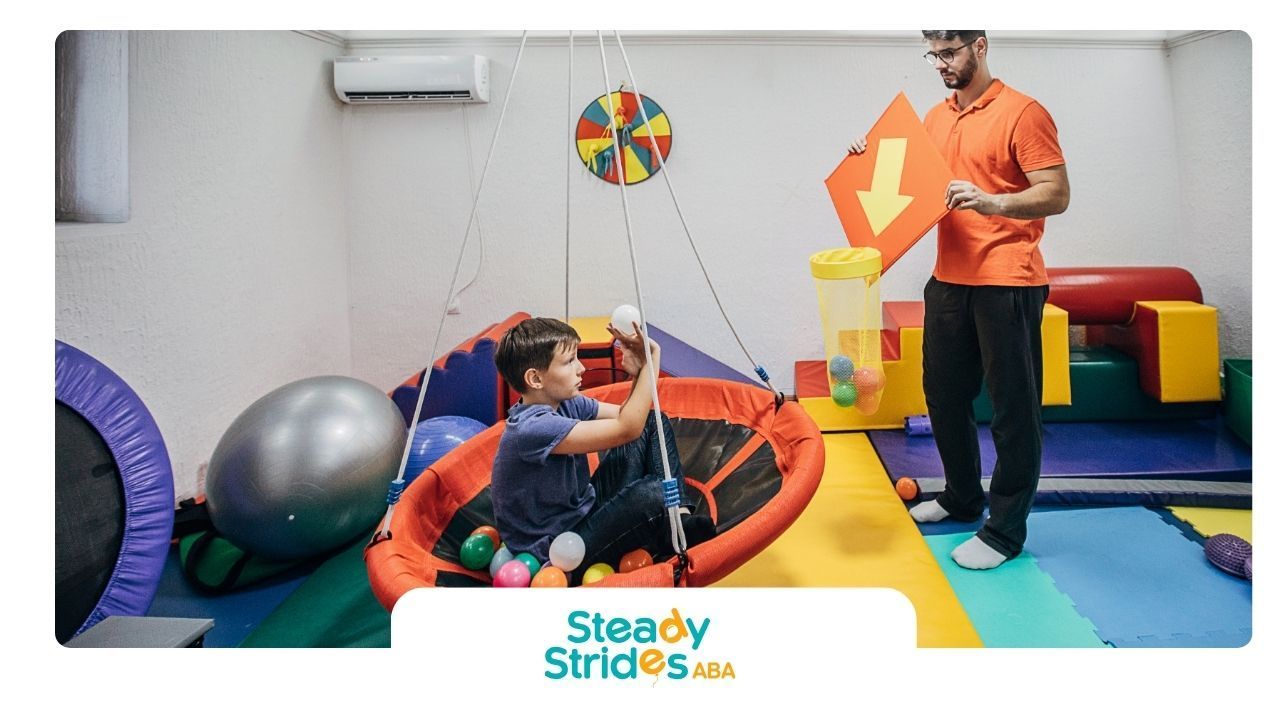
Building a strong and positive parent-child interaction is a journey, and Applied Behavior Analysis (ABA) therapy can be a powerful guide. This approach offers a structured yet flexible framework that not only supports children with developmental needs but also transforms family dynamics for the better. By focusing on the principles of behavior analysis, ABA empowers you to create a nurturing environment where communication flourishes. This article will explore how ABA therapy encourages healthier connections and strengthens your family bond.
Understanding ABA Therapy and Its Impact on Family Relationships
Applied Behavior Analysis (ABA) therapy is a highly effective intervention, particularly for children with Autism Spectrum Disorder (ASD). Its success, however, is deeply connected to family relationships and parent involvement. When you actively participate, you help bridge the gap between therapy sessions and home life, reinforcing new skills where they matter most.
This collaborative approach is designed to enhance communication skills and reduce challenging behaviors, leading to a more harmonious family life. Let's look closer at what ABA therapy is, how it supports your connection with your child, and why these positive interactions are so important.
What Is ABA Therapy?
Applied Behavior Analysis, commonly known as ABA therapy, is a well-regarded therapeutic approach based on the science of learning and behavior. A certified behavior analyst uses principles of behavior analysis to help individuals develop essential skills and reduce challenging behaviors. The primary goal is to promote socially significant behaviors that improve quality of life.
The process begins with a thorough assessment to understand your child's unique needs and behaviors. From there, the therapist develops an individualized instruction plan. This isn't a one-size-fits-all solution; every strategy is tailored to your child's specific goals, whether it's improving communication, social skills, or daily living abilities.
By breaking down complex skills into smaller, manageable steps, ABA therapy makes learning more accessible. It focuses on positive reinforcement to motivate and encourage progress, creating a supportive framework for your child to thrive.
How ABA Therapy Supports Parent-Child Connection
Your involvement is a cornerstone of successful ABA therapy. When you participate in sessions, you become an active partner in your child's journey, which directly strengthens the parent-child interaction. This parental involvement allows you to learn and apply therapeutic techniques at home, ensuring consistency and promoting positive outcomes.
Being present during sessions helps you understand the strategies firsthand. You can observe interactions in real-time and work with the therapist to track progress and make adjustments. This collaboration fosters a powerful sense of teamwork and shared purpose, enhancing your confidence in managing daily challenges and supporting your child's social development.
Your role in ABA extends far beyond observation. You help by:
- Reinforcing learned skills in natural, everyday settings.
- Providing valuable feedback to the therapist about your child's behavior at home.
- Ensuring the generalization of skills from the clinic to your home and community.
Importance of Positive Parent-Child Interactions
A positive interaction between you and your child creates a supportive environment that is essential for their emotional well-being and development. This nurturing environment acts as the foundation upon which new social skills are built, leading to a better overall quality of life for your entire family. When your child feels safe, loved, and understood, they are more motivated to learn and engage with the world.
Parent-led interventions within ABA therapy are designed to foster these exact connections. As you learn to implement ABA strategies, you'll find that communication improves and stress levels often decrease. You become more attuned to your child’s cues and needs, which builds trust and strengthens your bond.
This process empowers you as a parent, giving you the confidence and tools to handle challenges effectively. The result is a more harmonious home where positive interactions become the norm, not the exception.
Core Principles of ABA Therapy for Family Engagement
The core principles of ABA therapy are designed to be practical and effective, especially with strong family involvement. Central to this approach is the use of positive reinforcement, which focuses on rewarding desired behaviors to encourage them in the future. This creates a positive learning cycle that strengthens your relationship with your child.
By learning these foundational ABA principles, you can implement practical strategies at home. The following sections will cover how to use reinforcement, prompting, and consistency to boost positive behaviors and support your child’s growth in everyday situations.
Reinforcement Strategies to Encourage Positive Behavior
Positive reinforcement is one of the most powerful ABA strategies you can use to encourage lasting behavior change. The concept is simple: when you reward a behavior you want to see more of, your child is more likely to repeat it. This isn't about bribery; it's about motivating your child by acknowledging their efforts and successes.
You can easily integrate these strategies into your daily routines. For example, offering specific verbal praise like, "Great job putting your toys away!" is a form of positive reinforcement. The key is to align the reward with what truly motivates your child, whether it's extra playtime, a favorite snack, or a high-five.
Here are a few ways to use reinforcement:
- Use immediate and enthusiastic verbal praise for small accomplishments.
- Create a simple reward chart for completing morning or evening tasks.
- Offer access to a favorite activity after a less-preferred task is finished.
Using Prompting and Modeling in Everyday Routines
Beyond reinforcement, ABA techniques like prompting and modeling are incredibly useful in daily life. Prompting involves giving your child a small cue to help them complete a task successfully. This could be a verbal reminder, a gesture, or gently guiding their hand. The goal is to provide just enough support to ensure success and then gradually fade the prompt as they become more independent.
Modeling is just as it sounds: showing your child how to do something. You can model appropriate social greetings, how to ask for help, or the steps to brush their teeth. By demonstrating the behavior yourself, you provide a clear, visual example for them to follow.
Integrating these techniques into everyday routines creates a supportive environment where learning happens naturally. Whether you're getting ready in the morning or preparing for bed, these small, consistent actions can make a huge difference in building skills and confidence.
The Role of Consistency in Effective ABA Techniques
For any ABA technique to be truly effective, consistency is key. When you and your child's ABA therapist use the same strategies and expectations, your child receives a clear and predictable message. This consistency helps reduce confusion and anxiety, making it easier for them to learn new skills and behaviors.
Establishing a structured routine at home is a great way to promote consistency. Children often thrive on predictability, so having a regular schedule for meals, homework, and bedtime can provide a sense of security. Within these routines, you can consistently apply the behavior management strategies you've learned in parent training.
Working closely with your ABA therapist ensures that the approach is unified. Regular communication allows you to stay aligned on which behaviors to reinforce and how to respond to challenges. This teamwork makes therapy more effective and helps your child generalize their skills from the clinic to your home.
Parent Participation During ABA Sessions
Your participation during ABA therapy sessions is not just helpful—it's essential. You play a vital role in your child's progress by being an active part of the therapeutic team. This collaborative approach ensures that the skills your child learns in therapy are relevant and can be seamlessly integrated into your family's daily life.
Being present allows you to see techniques in action and learn how to apply them yourself. In the next sections, we'll explore how collaborating with therapists, setting shared goals, and practicing new skills together can maximize the benefits of ABA therapy for your child and your family.
Collaborating with ABA Therapists
Building a strong sense of teamwork with your ABA therapist is fundamental to your child's success. This partnership thrives on open and regular communication. When you and the therapist share insights, challenges, and successes, you create a holistic support system for your child. Don't hesitate to ask questions or share observations from home.
During therapy sessions, your input is invaluable. You know your child best—their motivations, their frustrations, and their unique personality. By sharing this knowledge, you help the therapist tailor interventions to be more effective and meaningful. This collaborative spirit ensures that the therapy aligns with your family's values and priorities.
Setting shared goals is another critical part of this teamwork. When you and the therapist agree on the objectives, you can work together to achieve them. This alignment ensures that everyone is on the same page, reinforcing the same skills and behaviors both in and out of therapy.
Setting Shared Goals for Communication Development
When it comes to communication skills, setting shared goals with your therapist is a game-changer. Your involvement ensures that the goals are practical and relevant to your child's daily life. For instance, you might prioritize functional communication, such as teaching your child to ask for what they need instead of getting frustrated.
ABA strategies can be customized to target these specific goals. The therapist might introduce therapy techniques like the Picture Exchange Communication System (PECS) or practice conversational turn-taking. By being part of the goal-setting process, you'll understand the purpose behind these techniques and how to support them at home.
This collaborative goal-setting empowers you as a parent. It transforms you from a passive observer into a key player in your child's development. When you have a say in the therapeutic direction, you become more invested and better equipped to foster your child’s communication growth.
Observing and Practicing New Skills With Children
Observing ABA therapy sessions is a form of parent training in itself. It provides a live demonstration of how to implement strategies effectively. Watching the therapist work with your child can give you the confidence and know-how to practice those same skills at home, which is crucial for early intervention and long-term skill development.
After observing, the next step is to practice. You can start by integrating new skills into your daily routines. For example, if your child is learning to identify colors, you can practice during snack time ("Do you want the red apple or the green one?"). This makes learning feel natural and fun.
Taking an active role in practicing skills offers several benefits:
- It accelerates your child's progress by providing more learning opportunities.
- It ensures skills are generalized to different people and environments.
- It strengthens your bond as you and your child learn and grow together.
Strengthening Communication Through ABA Strategies
Effective communication is at the heart of any healthy relationship. ABA therapy offers a wealth of communication strategies designed to improve language skills and social interaction. By breaking down communication into observable and teachable components, ABA helps children express their needs and understand others more clearly.
This focus not only benefits the child but also equips you with the tools to foster more meaningful conversations. The following sections will detail specific ABA techniques that enhance verbal and nonverbal communication, encourage emotional sharing, and use feedback to build mutual understanding.
Techniques to Enhance Verbal and Nonverbal Communication
ABA principles can be applied to significantly improve all aspects of communication, from spoken words to unspoken cues. The therapy focuses on building foundational language skills, such as labeling objects, making requests, and answering questions. At the same time, it can address nonverbal communication, including understanding body language and making appropriate eye contact.
For some children, this might involve structured activities like Discrete Trial Teaching to build vocabulary. For others, it might mean practicing conversational skills in a more natural play-based setting. The approach is always tailored to your child's specific communication needs and abilities.
ABA therapy can improve communication skills by:
- Teaching functional ways to request items or activities, reducing frustration.
- Encouraging turn-taking in conversations through games and structured activities.
- Improving the understanding and use of social cues in different situations.
Encouraging Social Interaction and Emotional Sharing
Beyond the mechanics of communication, ABA therapy also helps foster genuine social interaction and emotional sharing. It does this by creating a nurturing environment where your child feels safe to express themselves. A key part of developing social skills is learning to recognize and respond to the emotions of others, as well as sharing one's own feelings.
Therapists often use role-playing and social stories to teach these complex skills in a structured way. You can support this at home by modeling emotional expression yourself. For example, saying "I feel happy when we play this game together" helps your child connect words to feelings.
By creating a supportive environment for emotional sharing, you build a deeper connection with your child. This encourages them to come to you with their feelings, whether happy, sad, or frustrated, strengthening trust and mutual understanding.
Using Feedback to Foster Mutual Understanding
Feedback is a two-way street in ABA therapy and is essential for fostering mutual understanding. Your feedback to the therapist about what works at home and what challenges you're facing is invaluable. It allows the therapist to adjust communication strategies and ensure the therapy is practical for your family.
At the same time, the therapist provides you with feedback on how to best respond to your child's communication attempts. This might involve learning to recognize subtle cues or using specific prompts to encourage language. This continuous feedback loop is a core part of behavior analysis and parent involvement.
Ultimately, this process of giving and receiving feedback improves the quality of life for everyone. It helps you understand your child's perspective better and gives your child more effective ways to communicate their needs, leading to fewer misunderstandings and a stronger family connection.
Family Collaboration and Support Systems
ABA therapy is most successful when the entire family unit works together as a team. Creating a collaborative environment where everyone, including siblings and other caregivers, is on the same page is crucial. This team approach ensures that your child receives consistent support that is tailored to their unique needs.
Building this support system might involve connecting with other families through support groups or ensuring all family members understand the basic principles of ABA. In the following sections, we'll discuss how to build a team approach, integrate strategies into family life, and foster empathy among siblings.
Building a Team Approach Among Family Members
When all family members are united in supporting the ABA plan, you create a powerful and supportive environment for your child. A team approach means everyone understands the goals and the strategies being used. This could involve short family meetings to discuss progress or having the therapist explain techniques to other caregivers.
Active participation from everyone in the household reinforces learning and consistency. When a grandparent or sibling uses the same positive reinforcement techniques as you do, it strengthens the message for your child. This unified front prevents confusion and helps your child feel secure in their expectations.
This collaborative effort leads to better outcomes. When your child sees that everyone they love is part of their support system, it can boost their motivation and confidence. A team approach turns therapy from a clinical exercise into a family-wide commitment to growth and success.
Integrating ABA Strategies Into Family Routines
One of the most effective ways to ensure the generalization of skills is to weave ABA strategies directly into your family's daily routines. This makes learning a natural part of everyday life rather than something that only happens during therapy. Your home environment becomes a continuous learning opportunity.
For example, mealtimes can be used to practice requesting items, taking turns in conversation, or trying new foods. Bedtime routines can incorporate skills like following a sequence of steps (brushing teeth, putting on pajamas). The key is to see these daily activities as chances to reinforce what your child is learning in therapy.
This deep level of family involvement makes the strategies more meaningful and effective. By applying ABA principles in the context of your own home and routines, you are tailoring the therapy to your unique family situation and helping your child use their new skills in the real world.
Fostering Empathy and Support Between Siblings
The family dynamics between siblings can be complex, and it’s important to foster empathy and support. Siblings of children with autism may face unique challenges, such as feeling overlooked or not understanding their sibling's behavior. Creating a nurturing environment for all your children is vital.
You can promote understanding by having age-appropriate conversations about autism. Explaining why their sibling might communicate differently or need extra support can build patience and compassion. It's also important to balance your attention and create one-on-one time with each child to make them feel valued.
Here are some ways to foster a supportive sibling relationship:
- Involve siblings in fun, shared activities that play to everyone's strengths.
- Teach them simple ways they can help or play with their sibling.
- Acknowledge their feelings and create a safe space for them to ask questions.
Training and Educational Resources for Parents
To feel confident using ABA strategies, you need access to quality parent training and educational resources. Fortunately, there are many avenues for learning, from structured training sessions and workshops to one-on-one coaching with your child's therapist. These resources are designed to empower you with the knowledge and skills to support your child effectively.
The goal of this training is to make you an expert on your child's therapy plan. The following sections will explore different types of parent training programs, other learning opportunities available, and how ABA concepts can be adapted for your child's specific needs.
Parent Training Program for Effective ABA Use
Parent training is a critical component of a comprehensive ABA therapy program. These training sessions go beyond just giving you information; they provide hands-on guidance on how to implement practical strategies at home. Research shows that parents who receive targeted training report lower stress levels and greater confidence in managing their child's behavior.
These programs are designed to be a partnership between you and the therapist. They often use Behavioral Skills Training (BST), which involves instruction, modeling, rehearsal, and feedback, to ensure you master the techniques. This creates a supportive environment where you can learn at your own pace and ask questions.
The impact of effective parent training is significant. Studies have shown that it can lead to a substantial decrease in challenging behaviors. By equipping you with these skills, ABA therapy empowers you to become a more effective teacher and advocate for your child.
Learning Opportunities: Workshops, Webinars, and Coaching
Beyond formal parent training sessions, there are many other learning opportunities to deepen your understanding of ABA. Workshops, webinars, and coaching can provide focused instruction on specific topics, from managing meltdowns to teaching social skills. These resources increase parent involvement by making education accessible and flexible.
Workshops often provide interactive, in-person experiences, while webinars allow you to learn from the comfort of your own home. Individual coaching with a therapist offers personalized guidance tailored to your family's unique challenges and goals. Many autism treatment centers and online platforms offer these valuable resources.
Exploring these options can supplement your formal training and keep you informed about the latest strategies.
| Learning Opportunity | Description |
|---|---|
| Workshops | Interactive, in-person group sessions that often focus on a specific topic and allow for peer interaction. |
| Webinars | Online seminars that you can attend live or watch later, offering convenience and access to experts from anywhere. |
| Parent Coaching | One-on-one sessions with a therapist to address specific family challenges and receive personalized feedback and strategies. |
Adopting ABA Concepts to Different Ages and Abilities
One of the greatest strengths of ABA therapy is that it is not a rigid, one-size-fits-all approach. ABA concepts are highly adaptable to your child's unique needs, age, and stage of development. For a toddler in early intervention, therapy might be play-based and focus on foundational communication skills. For a teenager, it might target conversational skills, independence in daily routines, or job-readiness skills.
A qualified therapist will always conduct a thorough assessment to create an individualized plan. They will consider your child's current abilities, what motivates them, and what goals are most important for their future. This ensures that the interventions are both effective and respectful of your child as an individual.
This adaptability is what makes ABA so powerful in supporting parent-child interaction across the lifespan. As your child grows and changes, the strategies can evolve with them, providing consistent support through every developmental milestone.
Addressing Challenges and Solutions in ABA-Focused Parenting
Implementing ABA strategies at home can be incredibly rewarding, but it can also come with challenges. You might face obstacles like managing your own stress, dealing with particularly challenging behaviors, or finding the time and energy to be consistent. Acknowledging these difficulties is the first step toward finding solutions.
The good news is that ABA itself provides a framework for problem-solving. By creating a supportive environment and working with your therapist, you can learn to navigate these hurdles. The next sections offer solutions for overcoming common obstacles, managing stress, and using effective behavior management strategies.
Overcoming Common Obstacles at Home
One of the most common obstacles parents face is translating strategies from the clinic to the busy and often unpredictable home environment. It can feel overwhelming to implement techniques consistently when you're also juggling meals, chores, and other family needs. This is where breaking things down into manageable steps becomes crucial.
Instead of trying to do everything at once, focus on one or two key goals with your therapist. This problem-solving approach makes the process feel less daunting. Another challenge can be high levels of parental stress, which can make it difficult to respond patiently to challenging behaviors.
Creating a supportive environment for yourself is just as important as creating one for your child. Adequate training, support from your therapist, and connecting with other parents can provide the resources you need to overcome these obstacles and feel successful at home.
Managing Stress While Supporting Your Child
Parenting a child with unique needs can be stressful, and managing that stress is vital for your well-being and your ability to maintain a nurturing environment. High stress levels can impact your parent involvement and make it harder to implement ABA strategies effectively. Recognizing and addressing your own needs is not selfish; it's a necessary part of being a good parent.
ABA therapy supports parents by providing concrete tools and strategies, which can increase feelings of competence and reduce stress. The training you receive empowers you to handle challenging situations with more confidence. Additionally, building a strong family support network can make a world of difference.
Here are a few ways to manage stress:
- Connect with other parents through support groups to share experiences and advice.
- Schedule regular breaks for yourself to recharge, even if it's just for a few minutes.
- Celebrate small victories and focus on progress, not perfection.
Problem-Solving Strategies for Behavior Management
When challenging behaviors arise, it's easy to feel stuck. ABA techniques offer practical strategies for behavior management that are rooted in problem-solving. The first step is to work with your therapist to understand the 'function' or reason behind the behavior. Is your child trying to get attention, escape a task, or communicate a need?
Once you understand the function, you can implement a plan. This often involves teaching a replacement behavior—a more appropriate way for your child to get their needs met. For example, if your child has a meltdown when they want a toy, you can teach them to ask for it using words or a picture card.
Your parental involvement is key to making these strategies work. By consistently applying these ABA techniques, you can proactively manage behavior rather than just reacting to it, which significantly improves the quality of life for your child and your entire family.
Long-Term Benefits of ABA Therapy for Family Communication
The impact of ABA therapy on family communication extends far beyond the initial treatment period. The skills and strategies you and your child learn can lead to lasting positive outcomes, fostering greater independence for your child and a more harmonious family life. Tracking your child's progress is a rewarding part of this long-term journey.
The ultimate goal is to build a foundation for lifelong communication and connection. In the sections that follow, we will explore how ABA promotes independence, helps sustain positive changes in your interactions, and provides opportunities to celebrate milestones together as a family.
Promoting Independence and Self-Advocacy in Children
A major long-term benefit of ABA therapy is its focus on promoting independence. The therapy is designed to equip your child with the functional skills they need to navigate the world more successfully on their own. This includes everything from daily living skills like dressing themselves to social skills like initiating conversations.
As your child's functional communication improves, so does their ability for self-advocacy. ABA can teach them how to express their wants, needs, and preferences clearly and appropriately. This is a powerful skill that contributes immensely to their confidence and child's development.
By fostering these skills, ABA therapy helps pave the way for a more independent future. Your role as a parent evolves from directing their every move to supporting them as they make their own choices, a crucial step in every child's journey to adulthood.
Sustaining Positive Changes in Parent-Child Interaction
The positive changes you see in your parent-child interaction during ABA therapy are not meant to be temporary. The goal is to sustain this positive behavior and communication long after formal therapy sessions have ended. Your continued parental involvement is the key to making this happen.
By consistently using the communication strategies you've learned, you can maintain the open and supportive dynamic you've built. This doesn't mean you have to be a therapist 24/7, but rather that you continue to apply the core principles of positive reinforcement and clear communication in your daily life.
Staying connected with your therapy team for regular updates or check-ins can also help. As your child grows and new challenges arise, you can adapt your strategies with professional guidance. This ongoing partnership ensures that your family continues to thrive.
Celebrating Milestones and Progress Together
Celebrating your child's progress, no matter how small, is a vital part of the ABA journey. Recognizing milestones reinforces the success of ABA therapy and motivates both you and your child to keep moving forward. This is a chance to acknowledge the hard work everyone has put in.
Parental involvement in celebrating these achievements strengthens family bonds and promotes open communication. When you celebrate together, you send a powerful message to your child that their efforts are seen and valued. This positive focus can transform the entire family's perspective on the therapeutic process.
Here are some simple ways to celebrate milestones:
- Create a "success jar" where you write down achievements and read them together weekly.
- Plan a special family outing or activity to mark a significant accomplishment.
- Simply offer heartfelt praise and a hug to acknowledge their hard work.
Practical ABA Techniques Parents Can Use Daily
You don't have to be a therapist to use effective ABA techniques in your daily life. Simple, practical strategies can be woven into your everyday interactions to support your child's development and improve communication skills. Using positive reinforcement consistently can make a world of difference.
These techniques are all about creating natural learning moments that strengthen your bond. The following sections offer concrete examples of how you can apply ABA principles during daily routines, playtime, and moments of choice to foster a positive and supportive home environment.
Positive Reinforcement in Morning and Evening Routines
Morning and evening daily routines can sometimes be a source of stress, but they are also perfect opportunities to practice positive reinforcement. By breaking down routines into small, achievable steps and rewarding each success, you can encourage cooperation and build momentum for lasting behavior change. This ABA therapy principle is easy to apply.
For example, instead of focusing on what's not getting done, use specific verbal praise for each step your child completes. A simple "Wow, you put on your shirt all by yourself!" can be highly motivating. This shifts the focus from conflict to collaboration and makes routines more pleasant for everyone.
Here's how you can use positive reinforcement in your routines:
- Create a visual chart with pictures of each step (e.g., brush teeth, put on pajamas). Your child can put a sticker on each completed task.
- Offer five extra minutes of storytime for a smooth and cooperative bedtime routine.
- Give a high-five or a hug after each part of the morning routine is finished.
Integrating Communication Games and Activities
Play is a child's natural language, and it's a fantastic vehicle for teaching communication strategies and social skills. You can turn almost any activity into a fun communication game. The goal is to create engaging, low-pressure opportunities for your child to practice expressing themselves and interacting with others.
Work with your ABA therapist to get ideas for games that align with your child's specific goals. This could be as simple as playing "I Spy" to practice describing objects, or taking turns building a block tower to work on reciprocity and joint attention. These games make learning feel like fun, not work.
By integrating these activities into your playtime, you are actively supporting your child's development in a way that strengthens your relationship. These shared moments of fun and connection are just as important as any structured therapy session.
Creating Opportunities for Choice and Autonomy
One of the core ABA principles that greatly enhances parent-child relationships is fostering choice and autonomy. Providing your child with simple choices throughout the day is a powerful way to give them a sense of control and respect their individuality. This can reduce power struggles and decrease challenging behaviors that stem from feeling powerless.
The choices don't have to be big. Offering a choice between two acceptable options, like "Do you want to wear the blue socks or the white socks?" or "Should we read this book or that one?" empowers your child to communicate their preference. This simple act validates their voice and teaches them that their opinion matters.
Creating these opportunities for choice within a supportive environment strengthens family bonds. It shows your child that you see them as a capable individual, which builds their self-esteem and encourages them to engage more positively with you and their environment.
Conclusion
In summary, ABA therapy serves as a powerful tool for enhancing parent-child interactions and fostering strong family bonds. By focusing on positive reinforcement, consistent communication, and collaborative goal-setting, parents can create an environment that nurtures their child's development while improving their own parenting skills. Embracing the core principles of ABA not only benefits the child but also cultivates a supportive family atmosphere where everyone thrives. As you embark on this journey, remember that every small step taken towards understanding and applying ABA strategies can lead to significant long-term benefits for your family dynamics. If you’re ready to enhance your parenting approach, don’t hesitate to reach out for more information or assistance!
At Steady Strides ABA, we believe that strong family connections are the foundation for meaningful growth. Serving families across Texas and New Mexico, our team focuses on helping parents and children build positive, lasting relationships through the power of ABA therapy. By teaching communication, emotional understanding, and mutual trust, we turn everyday moments into opportunities for connection and success. At Steady Strides ABA, we don’t just work with children—we empower families to grow together, one steady step at a time.
FAQs
Can ABA therapy help parents communicate better with their child?
Yes, absolutely. ABA therapy provides parents with practical tools and insights to understand their child’s communication style. Through active parent involvement and training, you learn effective communication strategies to respond to your child’s needs, which strengthens your bond and leads to positive outcomes for the whole family.
What training do parents need to use ABA strategies with their child?
Parents typically receive parent training through dedicated training sessions, workshops, or one-on-one coaching with their child's therapist. These sessions teach specific therapy techniques and practical strategies that can be easily implemented at home, empowering parents to become active partners in their child's therapeutic journey.
How can ABA be tailored to different family situations?
ABA therapy is highly individualized. Therapists work closely with each family unit to understand their unique needs, values, and routines. They then develop practical strategies that fit seamlessly into the family's lifestyle, ensuring the plan is effective and sustainable within their supportive environment.
Sources:
- https://www.autismspeaks.org/applied-behavior-analysis
- https://www.autismspeaks.org/what-autism
- https://www.autism.org.uk/advice-and-guidance/topics/about-autism/autism-and-communication
- https://autism.org/challenging-behaviors-and-autism/
- https://www.gvsu.edu/autismcenter/start-connecting-behavioral-skills-training-bst-a-strategy-454.htm













